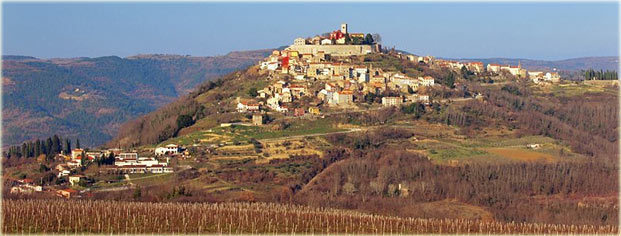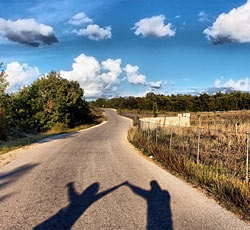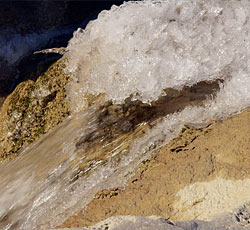-
Motovun to miasto położone na środkowej Istrii. Leży na szczycie stromego wzgórza, które dominuje nad doliną rzeki Mirna. Prowadzą do niej schody z 1052 stopniami. Jej podstawowy wygląd zmienił się bardzo niewiele od czasów średniowiecznych. Mury miasta są prawie nienaruszone, okrągła struktura miejska dostosowana jest do konfiguracji wzgórz. Z góry widać rozległe widoki na winnice i połacie lasu Motovun należące do kategorii parków leśnych.
Motovun (Centralna Istria)
Motovun, Travel Guide for holidays in Motovun, Istria
Motovun – Points of interests
 Motovun is a medieval town that grew up on the site of an ancient city called Kastelijer. It is placed on a hill 270 m (886 ft) above sea level with houses spreaded all over the hill. On the inner walls are several coats-of-arms of different Motovun ruling families and two gravestones of Roman inhabitants (dating from the 1st century). In the 10th and 11th centuries it was under the Bishop of Poreč. From 1278 it was taken over by Venice and surrounded by solid walls which are still intact today, and used as a walkway with unique views over the four corners of Istria. All three parts of the town are united by a system of internal and external fortifications with towers and city gates containing elements of Romanesque, Gothic and Renaissance styles, built between the 14th and 17th centuries. It is a typical example of Venetian colonial architecture.
Motovun is a medieval town that grew up on the site of an ancient city called Kastelijer. It is placed on a hill 270 m (886 ft) above sea level with houses spreaded all over the hill. On the inner walls are several coats-of-arms of different Motovun ruling families and two gravestones of Roman inhabitants (dating from the 1st century). In the 10th and 11th centuries it was under the Bishop of Poreč. From 1278 it was taken over by Venice and surrounded by solid walls which are still intact today, and used as a walkway with unique views over the four corners of Istria. All three parts of the town are united by a system of internal and external fortifications with towers and city gates containing elements of Romanesque, Gothic and Renaissance styles, built between the 14th and 17th centuries. It is a typical example of Venetian colonial architecture. The late-Renaissance church of St. Stephen was built right at the beginning of the 17th century refering to sketches probably designed by the well-known Venetian architect Andrea Palladio (1508-1580). The church contains several works of art: the marble statues of St. Stephen and St. Laurence by Francesco Bonazzo and the 17th-century painting of the Last Supper over the altar by an unknown Venetian artist. The water cisterns in the square in front of the church date from the 14th and 15th centuries.
The forest of Motovun The river Mirna flows below the hill and on the other side of the river there is the well known Motovun forest, an area of about 10 square kilometres in the valley of the river Mirna, of which 280 hectares (690 acres) is specially protected. This area diverges completely not only from the nearby forests, but also from those of the entire surrounding karst region because of its wild life, oist soil and rich-with-prized-black-and-white truffles (Tuber magnatum), which grows successfully here. Since this fungus grows underground, it is found and collected with the aid of specially trained dogs. In order to preserve natural conditions for the development of the Motovun forest, the protected area is occasionally flooded, even though the River Mirna is controlled and its entire valley protected from flooding.
On the slopes of the hill, grapes for famous Istrian wines are grown: the Teran and the Malvazija wine. The legend of Veli Jože Motovun is known among today’s population of Istria as the city of Veli Jože, the good gentle giant who symbolizes the Croatian people of Istria. The story written by Vladimir Nazor, one of the most important Croatian writers of the 20th century, was a response to the national struggles of the Croats for equality against fascism (1900-1914). The tale is known today throughout Croatia, while the character of Veli Jože (Big Joe) is quite correctly linked with the city.
A street in Motovun Since 1999, Motovun has hosted the international Motovun Film Festival for independent and avant-garde films from the U.S. and Europe. The biggest current local issue is the battle between foreign developers, who have proposed two 18-hole golf courses and a 500+-bed resort in the valley below the town, extending the existing 9-hole course and some of the local community, who are opposed to the proposals because of objections against the real estate speculation around the project, rejection of 123 building sites for villas in the protected natural environment and concerns about possible damage to their truffles growing on the other side of the river. The community is divided on the issue, as many welcome the development as a year round aid to jobs and local tourist revenues.
Church of St. Stephen and fountain Motovun’s ground plan is reproduced on the reverse of the Croatian 10 kuna banknote, issued in 1993, 1995, 2001 and 2004.
Photo to buy
| If you want to buy one of teh next photos please send us an e-mail at info@istriasun.com | ||||
 |  | |||